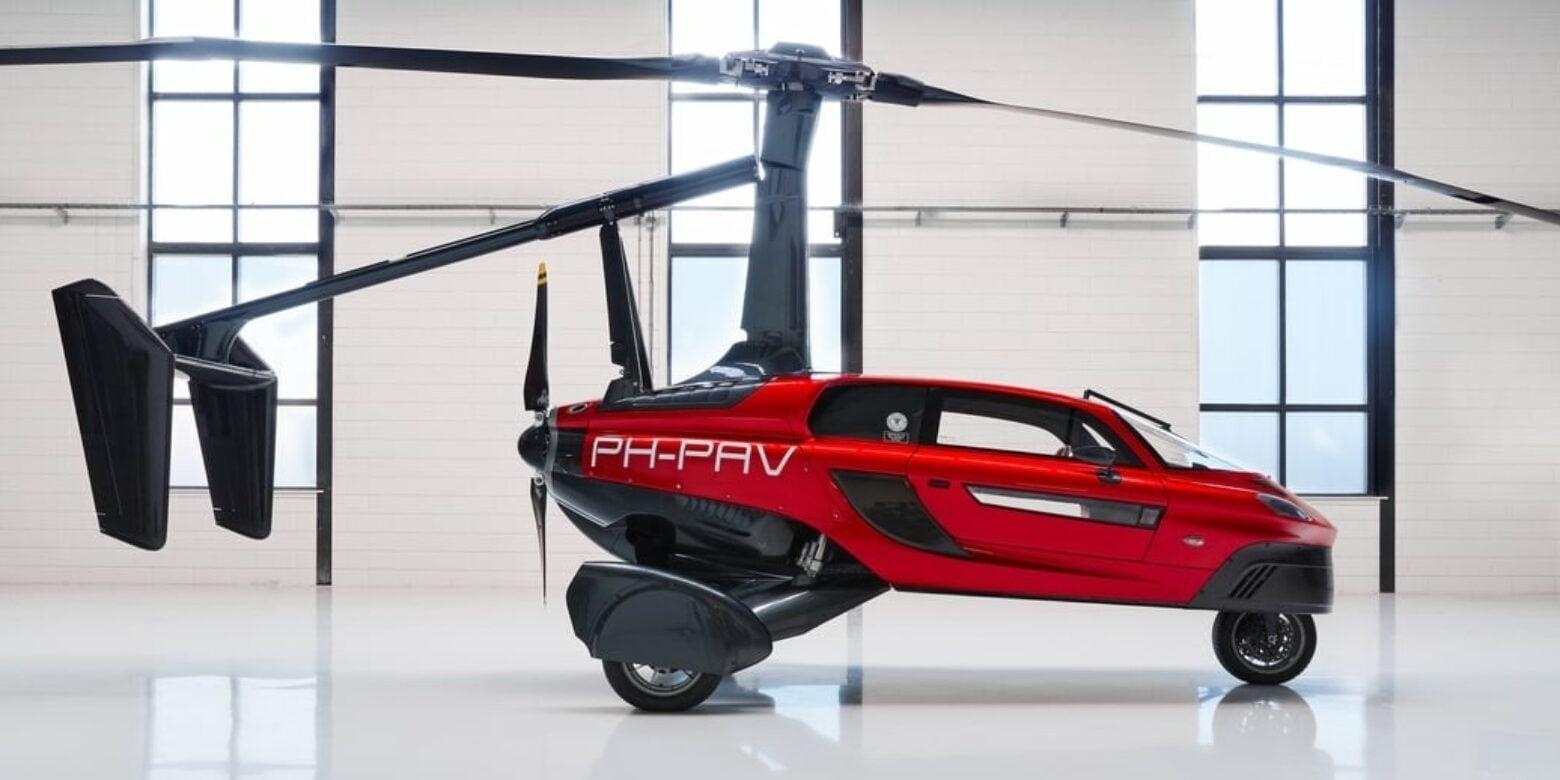
The Liberty flying car transitions from a road-going three-wheeler to a gyroplane for flight.
Electric-vertical-takeoff-and-landing (eVTOL) vehicles have been billed by their proponents as a seamless mobility solution that will save time for busy urban commuters.
But for that vision to succeed, operators will have to find ways to reduce friction on either side of the eVTOL journey–which in reality would consist of three separate segments: from home to vertiport by ground transportation; then on to a second vertiport by air taxi; and on to a final destination by car, bus or train.
For that reason, some startups—including Netherlands-based PAL-V and California-based Alef Aeronautics—believe that flying cars might offer a more efficient solution that would simplify the travel journey by removing the need to coordinate ground transportation to and from the vertiport or airport.
“We have a real car that you can drive on the roads to a small airstrip or place where you can take off, transition to flying mode in a few minutes and fly up to 500 km, land close to your destination and drive the final way,” explains Joris Wolters, head of marketing and investor relations at PAL-V, which is developing the Liberty flying car. “Unlike the eVTOLs, what we have is a truly door-to-door solution.”
The Liberty flying car transitions from a road-going three-wheeler to a gyroplane for flight. With an empty weight of 665 kg (1,466 lb.), the lightweight two-seater has a range of up to 1,300 km (807.7 mi.) driving or up to 500 km flying. The vehicle contains a large foldable rotor that gets stowed away when driving and unfurls during the approximately 6-min. transition to flight mode, Wolters says. A small pusher propeller at the rear of the aircraft provides forward propulsion.
For fast-response times, the time savings and flexibility of a fly/drive solution can be critical, Wolters says. As an example, he cites the recent order for five vehicles from Austrian MRO company Primus Aero, which oversees a large portfolio of private jets concentrated in Central Europe. For Primus, accessing its customers often involves traversing mountainous terrain in the Alpine region, which can require flying them in by plane or helicopter. But that introduces the problem of having to arrange ground transportation on both sides of the journey, adding friction to often time-sensitive repair missions.
“You can hop over the mountains quickly, but the issue is that with just an aircraft, the mechanic has no way to get around on the ground. So they have to arrange for a car to be there already with the tools and parts they need,” Wolters says. “The goal is to minimize aircraft downtime … It’s an endless hassle needing three vehicles to make a trip that a flying car can do alone.”
Another recent deal that illustrates the fast-response times enabled by flying cars came in the form of a partnership announced between PAL-V and U.K.-based emergency medical service provider SkyAngels Air Ambulance. It is intended to explore the use of flying cars in emergency medical response missions.
“We’re interested in a few different use cases in the medical realm,” Wolters explains. “One of them is getting doctors from hospitals onto the scene very quickly, because sometimes a specialist doctor needs to be in different locations very fast. The other big one is transporting organs, which is always very time-critical and cannot afford delays or a traffic jam.”
Aside from fast-response missions, PAL-V is also selling its vehicle to private individuals, including entrepreneurs and businesspeople who use it to commute and can afford the approximately $400,000-$600,000 price tag. A Private Pilot License for gyroplanes is required to fly the vehicle, with training to obtain the license provided by the company in an intensive 30-day virtual program.
In terms of certification, PAL-V received its G-1 certification basis for the Liberty from the European Union Aviation Safety Agency (EASA) in 2021. The company is aiming to certify the vehicle under CS-27 rules that cover smaller rotorcraft and gyroplanes, along with certain special conditions attached by EASA. The vehicle has also been approved for road use by European transport regulators.
The company plans to manufacture its two first series-production vehicles later this year, which will be used for certification flight testing beginning in mid-2024. Deliveries can begin around four-six months after the conclusion of flight testing, Wolters says.
As PAL-V continues to work to certify its vehicle with EASA, U.S. startup Alef Aeronautics has been making progress developing its Model A road-drivable multicopter eVTOL. The company recently received an FAA special airworthiness certificate for the latest prototype of its vehicle, paving the way for a public demonstration later this year.





